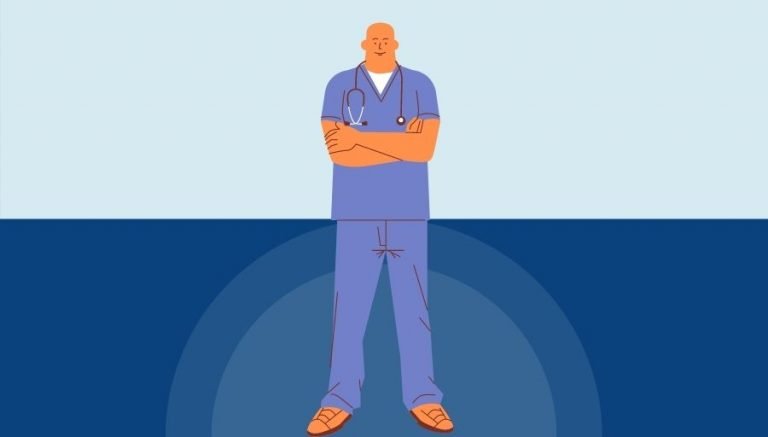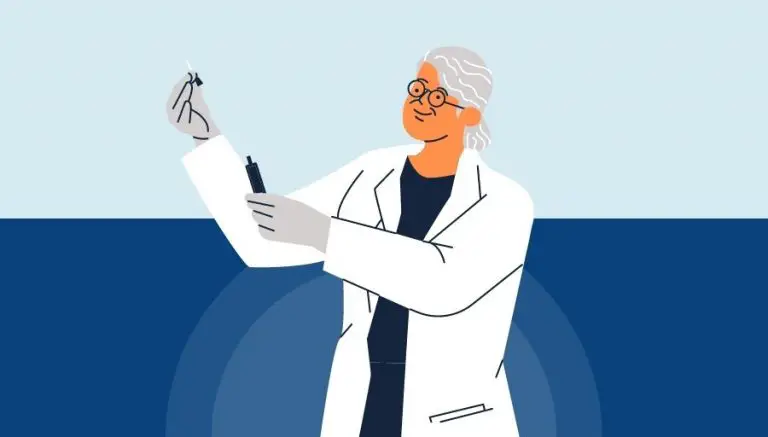Obsessive Compulsive Or Related Disorders – ICD 11 Codes
Definition of Obsessive-Compulsive Or Related Disorders: Obsessive-compulsive and related disorders is a group of disorders characterised by repetitive thoughts and behaviours that are believed to share similarities in aetiology and key diagnostic validators. Cognitive phenomena such as obsessions, intrusive thoughts and preoccupations are central to a subset of these conditions (i.e., obsessive-compulsive disorder, body dysmorphic disorder, hypochondriasis, and olfactory reference disorder) and are accompanied by related repetitive behaviours. Hoarding Disorder is not associated with intrusive unwanted thoughts but rather is characterised by a compulsive need to accumulate possessions and distress related to discarding them. Also included in the grouping are body-focused repetitive behaviour disorders, which are primarily characterised by recurrent and habitual actions directed at the integument (e.g., hair-pulling, skin-picking) and lack a prominent cognitive aspect. The symptoms result in significant distress or significant impairment in personal, family, social, educational, occupational, or other important areas of functioning.
Coded Elsewhere:
- Substance-induced obsessive-compulsive or related disorders
- Secondary obsessive-compulsive or related syndrome (6E64)
- Tourette syndrome (8A05.00)
Obsessive-Compulsive Disorder
Definition of Obsessive-Compulsive Disorder: Obsessive-Compulsive Disorder is characterised by the presence of persistent obsessions or compulsions, or most commonly both. Obsessions are repetitive and persistent thoughts, images, or impulses/urges that are intrusive, unwanted, and are commonly associated with anxiety. The individual attempts to ignore or suppress obsessions or to neutralize them by performing compulsions. Compulsions are repetitive behaviours including repetitive mental acts that the individual feels driven to perform in response to an obsession, according to rigid rules, or to achieve a sense of ‘completeness’. In order for obsessive-compulsive disorder to be diagnosed, obsessions and compulsions must be time consuming (e.g. taking more than an hour per day) or result in significant distress or significant impairment in personal, family, social, educational, occupational or other important areas of functioning.
ICD 11 Code For Obsessive-Compulsive Disorder
6B20 Obsessive-compulsive disorder
Inclusions:
- anankastic neurosis
- obsessive-compulsive neurosis
Exclusions:
- obsessive compulsive behaviour (MB23.4)
6B20.0 Obsessive-compulsive disorder with fair to good insight
Definition of Obsessive-compulsive disorder with fair to good insight: All definitional requirements of obsessive-compulsive disorder are met. Much of the time, the individual is able to entertain the possibility that his or her disorder-specific beliefs may not be true and is willing to accept an alternative explanation for his or her experience. At circumscribed times (e.g., when highly anxious), the individual may demonstrate no insight.
6B20.1 Obsessive-compulsive disorder with poor to absent insight
Definition of Obsessive-compulsive disorder with poor to absent insight: All definitional requirements of obsessive-compulsive disorder are met. Most or all of the time, the individual is convinced that the disorder-specific beliefs are true and cannot accept an alternative explanation for their experience. The lack of insight exhibited by the individual does not vary markedly as a function of anxiety level.
6B20.Z Obsessive-compulsive disorder unspecified
Body dysmorphic disorder
Definition of Body dysmorphic disorder: Body Dysmorphic Disorder is characterised by persistent preoccupation with one or more perceived defects or flaws in appearance that are either unnoticeable or only slightly noticeable to others. Individuals experience excessive self-consciousness, often with ideas of reference (i.e., the conviction that people are taking notice, judging, or talking about the perceived defect or flaw). In response to their preoccupation, individuals engage in repetitive and excessive behaviours that include repeated examination of the appearance or severity of the perceived defect or flaw, excessive attempts to camouflage or alter the perceived defect, or marked avoidance of social situations or triggers that increase distress about the perceived defect or flaw. The symptoms are sufficiently severe to result in significant distress or significant impairment in personal, family, social, educational, occupational or other important areas of functioning.
ICD 11 Code For Body dysmorphic disorder
6B21 Body dysmorphic disorder
Exclusions:
- Anorexia Nervosa (6B80)
- Bodily distress disorder (6C20)
- Concern about body appearance (BlockL2‑QD3)
6B21.0 Body dysmorphic disorder with fair to good insight
Definition of Body dysmorphic disorder with fair to good insight: All definitional requirements of body dysmorphic disorder are met. Much of the time, the individual is able to entertain the possibility that his or her disorder-specific beliefs may not be true and is willing to accept an alternative explanation for his or her experience. At circumscribed times (e.g., when highly anxious), the individual may demonstrate no insight.
6B21.1 Body dysmorphic disorder with poor to absent insight
Definition of Body dysmorphic disorder with poor to absent insight: All definitional requirements of body dysmorphic disorder are met. Most or all of the time, the individual is convinced that the disorder-specific beliefs are true and cannot accept an alternative explanation for their experience. The lack of insight exhibited by the individual does not vary markedly as a function of anxiety level.
6B21.Z Body dysmorphic disorder unspecified
Olfactory reference disorder
Definition of Olfactory reference disorder: Olfactory Reference Disorder is characterised by persistent preoccupation with the belief that one is emitting a perceived foul or offensive body odour or breath that is either unnoticeable or only slightly noticeable to others. Individuals experience excessive self-consciousness about the perceived odour, often with ideas of reference (i.e., the conviction that people are taking notice, judging, or talking about the odour). In response to their preoccupation, individuals engage in repetitive and excessive behaviours such as repeatedly checking for body odour or checking the perceived source of the smell, or repeatedly seeking reassurance, excessive attempts to camouflage, alter, or prevent the perceived odour, or marked avoidance of social situations or triggers that increase distress about the perceived foul or offensive odour. The symptoms are sufficiently severe to result in significant distress or significant impairment in personal, family, social, educational, occupational or other important areas of functioning.
ICD 11 Code For Olfactory reference disorder
6B22 Olfactory reference disorder
6B22.0 Olfactory reference disorder with fair to good insight
Definition of Olfactory reference disorder with fair to good insight: All definitional requirements of olfactory reference disorder are met. Much of the time, the individual is able to entertain the possibility that his or her disorder-specific beliefs may not be true and is willing to accept an alternative explanation for his or her experience. At circumscribed times (e.g., when highly anxious), the individual may demonstrate no insight.
6B22.1 Olfactory reference disorder with poor to absent insight
Definition of Olfactory reference disorder with poor to absent insight: All definitional requirements of olfactory reference disorder are met. Most or all of the time, the individual is convinced that the disorder-specific beliefs are true and cannot accept an alternative explanation for their experience. The lack of insight exhibited by the individual does not vary markedly as a function of anxiety level.
6B22.Z Olfactory reference disorder unspecified
Hypochondriasis
Definition of Hypochondriasis: Hypochondriasis is characterised by persistent preoccupation or fear about the possibility of having one or more serious, progressive or life-threatening illnesses. The preoccupation is accompanied by either: 1) repetitive and excessive health-related behaviours, such as repeatedly checking of the body for evidence of illness, spending inordinate amounts of time searching for information about the feared illness, repeatedly seeking reassurance (e.g. arranging multiple medical consultations); or 2) maladaptive avoidance behaviour related to health (e.g. avoids medical appointments). The symptoms result in significant distress or significant impairment in personal, family, social, educational, occupational or other important areas of functioning.
ICD 11 Code For Hypochondriasis
6B23 Hypochondriasis
Inclusions:
- Hypochondriacal neurosis
- Illness anxiety disorder
Exclusions:
- Body dysmorphic disorder (6B21)
- Bodily distress disorder (6C20)
- Fear of cancer (MG24.0)
6B23.0 Hypochondriasis with fair to good insight
Definition of Hypochondriasis with fair to good insight: All definitional requirements of hypochondriasis are met. Much of the time, the individual is able to entertain the possibility that his or her disorder-specific beliefs may not be true and is willing to accept an alternative explanation for his or her experience. At circumscribed times (e.g., when highly anxious), the individual may demonstrate no insight.
6B23.1 Hypochondriasis with poor to absent insight
Definition of Hypochondriasis with poor to absent insight: All definitional requirements of hypochondriasis are met. Most or all of the time, the individual is convinced that the disorder-specific beliefs are true and cannot accept an alternative explanation for their experience. The lack of insight exhibited by the individual does not vary markedly as a function of anxiety level.
6B23.Z Hypochondriasis unspecified
Hoarding disorder
Definition of Hoarding disorder: Hoarding disorder is characterised by accumulation of possessions that results in living spaces becoming cluttered to the point that their use or safety is compromised. Accumulation occurs due to both repetitive urges or behaviours related to amassing items and difficulty discarding possessions due to a perceived need to save items and distress associated with discarding them. If living areas are uncluttered this is only due to the intervention of third parties (e.g., family members, cleaners, authorities). Amassment may be passive (e.g. accumulation of incoming flyers or mail) or active (e.g. excessive acquisition of free, purchased, or stolen items). The symptoms result in significant distress or significant impairment in personal, family, social, educational, occupational or other important areas of functioning.
ICD 11 Code For Hoarding disorder
6B24 Hoarding disorder
6B24.0 Hoarding disorder with fair to good insight
Definition of Hoarding disorder with fair to good insight: All definitional requirements of hoarding disorder are met. The individual recognizes that hoarding-related beliefs and behaviours (pertaining to excessive acquisition, difficulty discarding, or clutter) are problematic. This qualifier level may still be applied if, at circumscribed times (e.g., when being forced to discard items), the individual demonstrates no insight.
6B24.1 Hoarding disorder with poor to absent insight
Definition of Hoarding disorder with poor to absent insight: All definitional requirements of hoarding disorder are met. Most or all of the time, the individual is convinced that that hoarding-related beliefs and behaviours (pertaining to excessive acquisition, difficulty discarding, or clutter) are not problematic, despite evidence to the contrary. The lack of insight exhibited by the individual does not vary markedly as a function of anxiety level.
6B24.Z Hoarding disorder unspecified
Body-focused repetitive behaviour disorders
Definition of Body-focused repetitive behaviour disorders: Body focused repetitive behaviour disorders are characterised by recurrent and habitual actions directed at the integument (e.g. hair-pulling, skin-picking, lip-biting), typically accompanied by unsuccessful attempts to decrease or stop the behaviour involved, and which lead to dermatological sequelae (e.g., hair loss, skin lesions, lip abrasions). The behaviour may occur in brief episodes scattered throughout the day or in less frequent but more sustained periods. The symptoms result in significant distress or significant impairment in personal, family, social, educational, occupational or other important areas of functioning.
ICD 11 Code For Body-focused repetitive behaviour disorders
6B25 Body-focused repetitive behaviour disorders
6B25.0 Trichotillomania
Definition of Trichotillomania: Trichotillomania is characterised by recurrent pulling of one’s own hair leading to significant hair loss, accompanied by unsuccessful attempts to decrease or stop the behaviour. Hair pulling may occur from any region of the body in which hair grows but the most common sites are the scalp, eyebrows, and eyelids. Hair pulling may occur in brief episodes scattered throughout the day or in less frequent but more sustained periods. The symptoms result in significant distress or significant impairment in personal, family, social, educational, occupational or other important areas of functioning.
Inclusions:
- Compulsive hair plucking
Exclusions:
- stereotyped movement disorder with hair-plucking (6A06)
6B25.1 Excoriation disorder
Definition of Excoriation disorder: Excoriation disorder is characterised by recurrent picking of one’s own skin leading to skin lesions, accompanied by unsuccessful attempts to decrease or stop the behaviour. The most commonly picked sites are the face, arms and hands, but many individuals pick from multiple body sites. Skin picking may occur in brief episodes scattered throughout the day or in less frequent but more sustained periods. The symptoms result in significant distress or significant impairment in personal, family, social, educational, occupational or other important areas of functioning.
Inclusions:
- skin picking disorder
Exclusions:
- Stereotyped movement disorder (6A06)
- Acute excoriation of skin (ME62.9)
- Chronic excoriation of skin (ME63.7)
6B25.Y Other specified body-focused repetitive behaviour disorders
6B25.Z Body-focused repetitive behaviour disorders unspecified
Other specified obsessive-compulsive or related disorders
ICD 11 Code For Other specified obsessive-compulsive or related disorders
6B2Y Other specified obsessive-compulsive or related disorders
Obsessive-compulsive or related disorders unspecified
ICD 11 Code For Obsessive-compulsive or related disorders unspecified
6B2Z Obsessive-compulsive or related disorders unspecified







